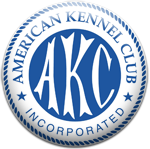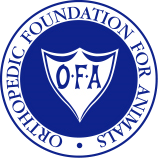History of the Komondor:
The Komondor is an ancient breed of Asiatic origin. While its homeland has been
Hungary for many centuries, it is generally thought to be the dog brought to what is
now Hungary by the Kuns (Cuman, Koman) who were fleeing the invading Mongols. It
is thought that the word “Komondor” meant the “dog of the Kuns”. The word
references to large sheepdogs predate that.
The Komondor was recognized by the American Kennel Club in 1937. During World
War II contact between the United States and Hungary was cut off and there was
virtually no importing and no breeding done in this country. In Europe the breed was
almost wiped out because of the war. Only a few dozen specimens were left
afterward, and the breed was slowly re-established in Hungary, but was rare even
there.
General Appearance
The Komondor is characterized by imposing strength, dignity, courageous demeanor,
and pleasing conformation. He is a large, muscular dog with plenty of bone and
substance, covered with an unusual, heavy coat of white cords. The working
Komondor lives during the greater part of the year in the open, and his coat serves to
help him blend in with his flock and to protect him from extremes of weather and
beasts of prey. Nature and Characteristics: The Komondor is a flock guardian, not a
herder. Originally developed in Hungary to guard large herds of animals on the open
plains, the Komondor was charged with protecting the herd by himself, with no
assistance and no commands from his master. The mature, experienced dog tends to
stay close to his charges, whether a flock or family; he is unlikely to be drawn away
from them in chase, and typically doesn’t wander far. Though very sensitive to the
desires of his master, heavy-handed training will produce a stubborn, unhappy
Komondor. While reserved with strangers, the Komondor is demonstrative with those
he loves, selflessly devoted to his family and his charges, and will defend them against
any attack. The combination of this devotion to all things dear to him and the desire to
take responsibility for them produces an excellent guardian of herds or home, vigilant,
courageous, and very faithful.
Size, Proportion, Substance
Dogs 27½ inches and up at the withers; bitches 25½ inches and up at the withers.
Dogs are approximately 100 pounds and up, bitches, approximately 80 pounds and up
at maturity, with plenty of bone and substance. While large size is important, type,
character, symmetry, movement and ruggedness are of the greatest importance and
are on no account to be sacrificed for size alone. The body is slightly longer than the
height at the withers. Height below the minimum is a fault.
Head
The head is large. The length of the head from occiput to tip of nose is approximately
2/5 the height of the dog at the withers. The skin around the eyes and on the muzzle is
dark.
Eyes: Medium-sized and almond-shaped, not too deeply set. The iris of the eye is
dark brown. Edges of the eyelids are gray or black. Light eyes are a fault. Blue eyes
are a disqualification. Ears: In shape the ear is an elongated triangle with a slightly
rounded tip. Medium-set and hanging and long enough to reach to the inner corner of
the eye on the opposite side of the head. Erect ears or ears that move toward an
erect position are a fault. Skull: The skull is broad with well-developed arches over the
eyes. The occiput is fairly well-developed and the stop is moderate. Muzzle: The
muzzle is wide, coarse, and truncated. Measured from inner corner of the eye to tip of
nose the muzzle is 2/5 of the total length of the head. The top of the muzzle is straight
and is parallel to the top of the skull. Underjaw is well-developed and broad. Lips are
tight and are black in color. Ideally gums and palate are dark or black. Nose: Nose is
wide and the front of the nose forms a right angle with the top of the muzzle. The
nostrils are wide. The nose is black. A dark gray or dark brown nose is not desirable
but is acceptable. A flesh-colored nose is a disqualification. Bite: Bite is scissors; a
level bite is acceptable. A distinctly overshot or undershot bite is a fault. Any missing
teeth is a serious fault. Three or more missing teeth is a disqualification.
Neck
Muscular, of medium length, moderately arched, with no dewlap. The head erect.
Topline
The back is level and strong.
Body
Characterized by a powerful, deep chest, which is muscular and proportionately wide.
The breast is broad and well-muscled. The belly is somewhat drawn up at the rear.
The rump is wide, muscular, and slopes slightly towards the root of the tail. Softness
or lack of good muscle tone is a fault.
Tail
A continuation of the rump line, hanging, and long enough to reach the hocks. Slightly
curved upwards and/or to one side at its end. Even when the dog is moving or excited,
the greater part of the tail is raised no higher than the level of the back. A short or
curly tail is a fault.
Forequarters
Shoulders are well laid back. Forelegs straight, well-boned, and muscular. Viewed
from any side, the legs are like vertical columns. The upper arms are carried close to
the body, without loose elbows.
Feet
Strong, rather large, and with close, well-arched toes. Pads are hard, elastic, and
black or gray. Ideally, nails are black or gray, although light nails are acceptable.
Hindquarters
The steely, strong bone structure is covered with highly-developed muscles. The legs
are straight as viewed from the rear. Stifles are well-bent. Rear dewclaws must be
removed.
Coat
Characteristic of the breed is the dense, protective coat. The puppy coat is relatively
soft, but it shows a tendency to fall into cord-like curls. The young adult coat, or
intermediate coat, consists of very short cords next to the skin which may be
obscured by the sometimes lumpy looking fluff on the outer ends of the cords. The
mature coat consists of a dense, soft, woolly undercoat much like the puppy coat, and
a coarser outer coat that is wavy or curly. The coarser hairs of the outer coat trap the
softer undercoat, forming permanent, strong cords that are felt-like to the touch. A
grown dog is entirely covered with a heavy coat of these tassel-like cords, which form
naturally. It must be remembered that the length of the Komondor’s coat is a function
of age, and a younger dog must never be penalized for having a shorter coat. Straight
or silky coat is a fault. Failure of the coat to cord by two years of age is a
disqualification. Short, smooth coat on both head and legs is a disqualification.
Color
Color of the coat is white, but not always the pure white of a brushed coat. A small
amount of cream or buff shading is sometimes seen in puppies, but fades with
maturity. In the ideal specimen the skin is gray. Pink skin is not desirable but is
acceptable. Color other than white, with the exception of small amounts of cream or
buff in puppies, is a disqualification.
Gait
Light, leisurely and balanced. The Komondor takes long strides, is very agile and light
on his feet. The head is carried slightly forward when the dog trots.
The foregoing is a description of the ideal Komondor. Any deviation should be
penalized in direct proportion to the extent of that deviation. Extreme deviation in any
part should be penalized to the extent that the dog is effectively eliminated from
competition.
Disqualifications
Blue eyes.
Flesh-colored nose.
Three or more missing teeth.
Failure of the coat to cord by two years of age.
Short, smooth coat on both head and legs.
Color other than white, with the exception of small amounts of cream or buff in
puppies.
Approved June 13, 1994
Effective July 31, 1994



